Microsoft Flight Simulator: Take-off
In this section of the Microsoft Flight Simulator game guide, we describe the entire process of preparing an airplane to takeoff. We pay special attention to the proper preparation, the launch procedure itself and provide some information on any surprises that may occur during this procedure.
You're positioned in the middle of the lane, ready to take off. No more sightseeing! If we're going to get any fun out of flying, avoid activating any facilitations, especially in the flight model. Full realism is a go, except for little things like talking to the ATC. Before you go "full power!" remember a few things before take-off.
Before take-off
1- Get Cleared for Take-Off. In the beginning, you can leave this responsibility to the AI by delegating conversations with the ATC tower to a virtual co-pilot. This option can be found in the Toolbar - more on this topic can be found in the Toolbar section of the guide.
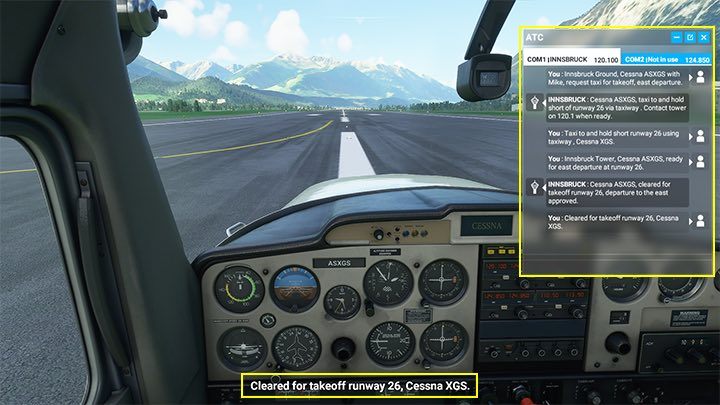
2- Set Altimeter. You can do this automatically by pressing B . In this case, we are at Innsbruck airport, which is 1,911 feet above sea level, so a large tip on 9 and a small one on 2 is the correct indication. Sometimes when you press the B key you will see the tip suddenly jump to a slightly different value.
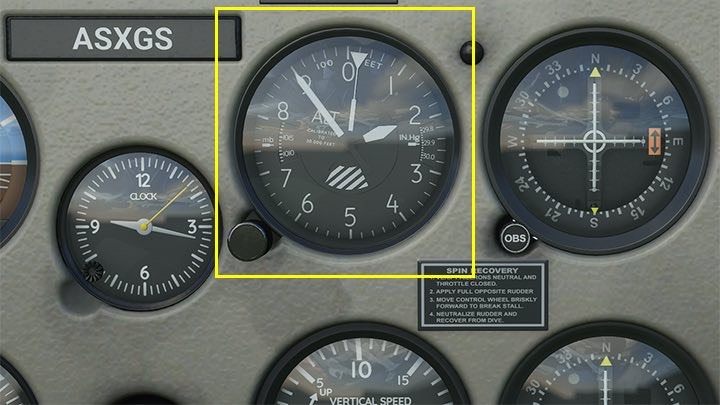
3 - Set Flaps by one position (key F7). The Cessna 152 is a wonderful aircraft that forgives many mistakes and can take off without flaps, but there's nothing like practicing good habits. Flaps will be very useful either way on very short runways. By the way, check if the trimmer wheel is at TO (Take-Off) position.
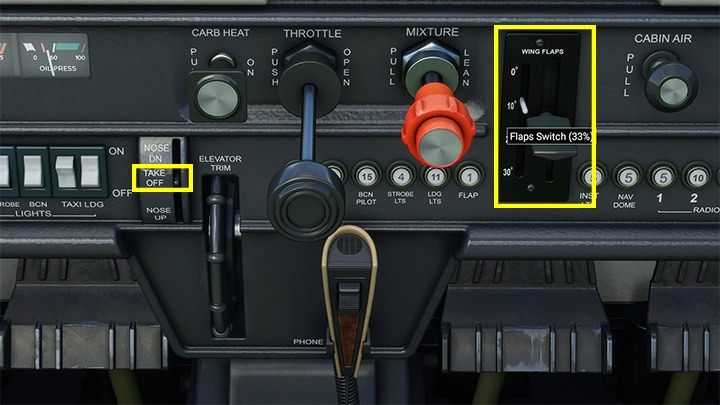
4 - Check the fuel mixture. We're on a runway at 1,900 feet, so it's too low to reduce it. The red lever should be pressed to 100%.

5 - Release parking brake. In most aircraft, you'll find it in a similar place where the bonnet open switch is in cars or on the center console. The default key is Left Ctrl + Del (numeric).
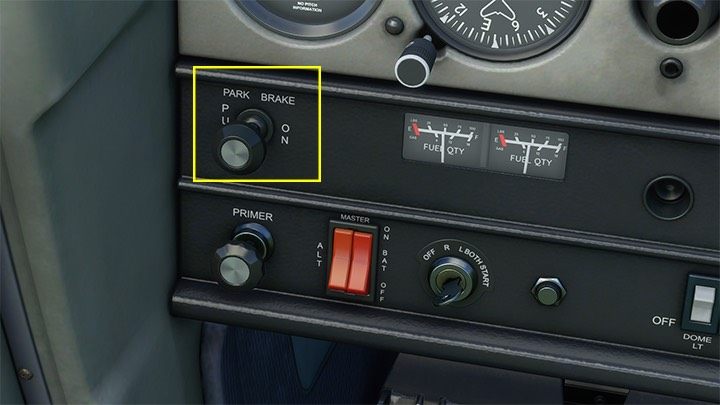
Take Off
1 - (optional) Press space to move the camera slightly higher and observe the nose of the aircraft. Click on the Yoke to hide it and have a better view of the instruments.
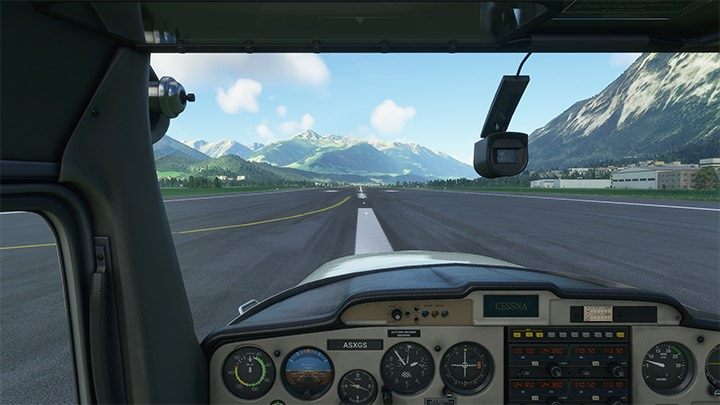
2-Move the throttle lever to 100% (Full Throttle) with smooth, calm motion (you can also use the mouse on the cockpit lever and finally the F3 key). The RPM clock should show a value of less than 2500 rpm.
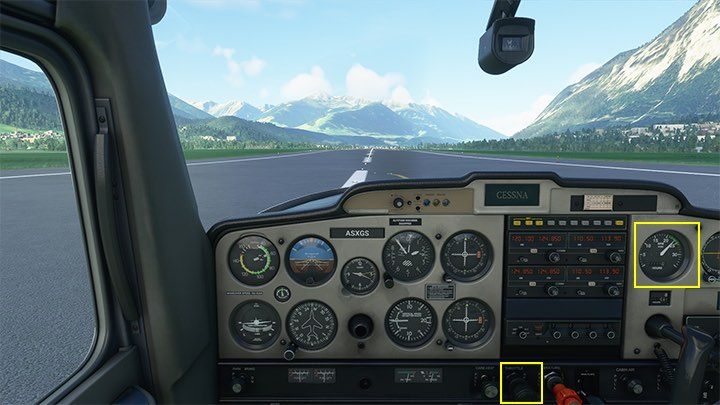
3 - Perform gentle counter-rudder motion. As soon as you start rolling, the plane starts pulling to the left. It's a completely natural behavior with a propeller engine. At all costs, keep the aircraft on the runway axis by making appropriate counter-rudder motions to the right direction. The ideal solution will be separate pedals or a torsion joystick handle. Ultimately, gamepad's triggers will also work. Using a keyboard (numeric Enter) can be difficult in this case.

Remember, the first time doesn't have to be perfect. In time, you'll get to the point where the plane won't even make it down a straight line. However, if this stage does not work out for you (e.g. by not having a proper controller), you can enable rudder assist at startup. See Realism and facilitations chapter for details.
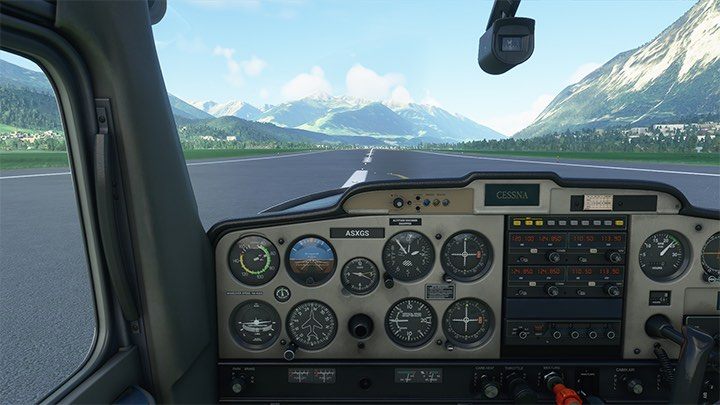
4 - At about 60 knots, gently pull the steer together and the aircraft will take off from the ground. Keep the steer in this position and hide the flaps at the same time (F6). On planes with retractable landing gear, you must also hide the wheels at this point (G). The Cessna 152 is not the case. Don't make any violent maneuvers, just take it easy with the nose gently raised up.
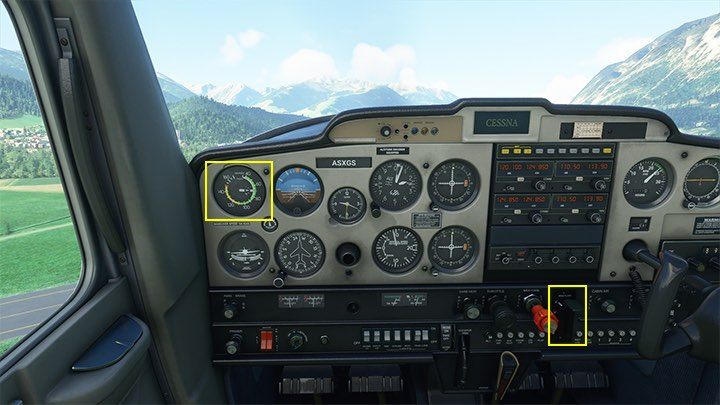
- Microsoft Flight Simulator 2020 Guide
- Microsoft Flight Simulator: Game Guide
- Microsoft Flight Simulator: Flying school
- Microsoft Flight Simulator: Analog cockpit
- Microsoft Flight Simulator: Flight Plan - basics
- Microsoft Flight Simulator: Take-off
- Microsoft Flight Simulator: Change of direction - flying on course
- Microsoft Flight Simulator: Climb
- Microsoft Flight Simulator: Cruise
- Microsoft Flight Simulator: Descent
- Microsoft Flight Simulator: Landing
- Microsoft Flight Simulator: Flying school
- Microsoft Flight Simulator: Game Guide
You are not permitted to copy any image, text or info from this page. This site is not associated with and/or endorsed by the developers and the publishers. All logos and images are copyrighted by their respective owners.
Copyright © 2000 - 2025 Webedia Polska SA for gamepressure.com, unofficial game guides, walkthroughs, secrets, game tips, maps & strategies for top games.
